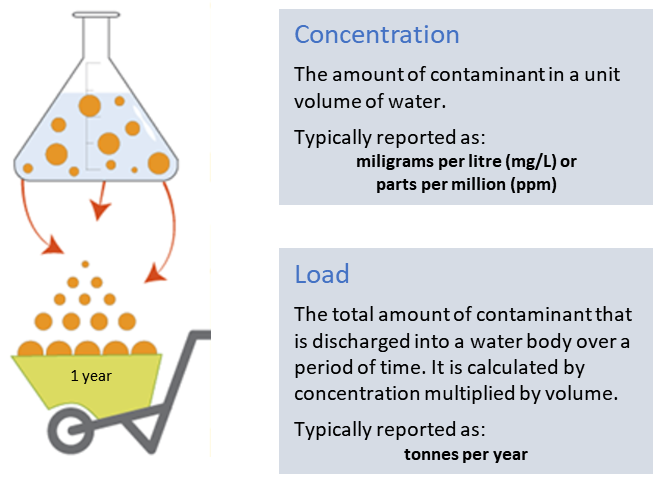Water Quality
Water quality is a measure of the condition of water relative to the requirements of one or more living species (animals, plants, fungi, and bacteria). The most common standards used to assess water quality relate to the health of ecosystems, the safety of human contact, and the use for drinking water.
Regional Councils around New Zealand measure the water quality of our rivers, lakes, and streams to get an idea about whether the water is suitable for a range of uses, as well as the effect of different land use pressures (i.e., urbanisation, farming, forestry, etc.) on the condition of our freshwater resources. Government is directing the improvements to freshwater and its management through the introduction of the National Policy Statement for Freshwater Management.
How do we protect water quality?
The quality of our rivers, streams, wetlands, and estuaries is closely linked to land use decisions made on both a public and a private scale. Many of the land areas are privately owned, and you as someone using the land, can make a significant contribution to protecting waterways through well informed management practices. Protecting water quality is not only healthy for the environment, it is can also lead to both social and economic benefits.
By understanding how water interacts within a Physiographic Environment you can identify the issues surrounding your land and contribute significantly to the protection of your waterways from many of the issues which may currently be present. With the cooperation of other neighbouring farmers, planning on a catchment scale will provide a framework to restore impaired waterways and protect water quality in healthy streams.
Everyone is part of the problem. Everyone needs to be part of the solution.
Water Quality Contaminants
Microbial contamination is microbes specifically harmful to human health.
There are four environmental contaminants identified under the New Zealand Government’s National Policy Statement for Freshwater Management for reduction to improve water quality.
How do contaminants affect a waterway?
Environmental contaminants reduce the ability of the water to support a healthy ecosystem and our ability to use waterbodies for recreation and mahinga kai (food gathering).
Excessive nutrients can change the balance of nutrient cycling within a lake or river and can result in excessive algae or plant growth, depleted oxygen levels, fish and other aquatic species deaths, and reduced use of the water resources, especially for drinking water. At high concentrations, nutrients are also toxic to both us and the environment.
Sediment can smother aquatic habitats making them unsuitable environments for aquatic species to live. This has an adverse effect on habitats including those used for fish spawning. Sediment also transports nutrients (particularly phosphorus), nitrogen in the form of ammonium, and microbes downstream as they adsorb to the soil particle. Sediment is deposited and accumulates in low energy environments, such as stream beds, lakes, and estuaries.
Microbial contaminants are disease-causing organisms, such as campylobacter and E.coli. They come from animal wastes and can make people sick when they ingest or come into contact with contaminated water.
By understanding how these contaminants get into waterways, we can develop solutions to minimise their loss from the land.
How are environmental contaminants assessed?
Environmental contaminants can be assessed in two ways - by concentration or load.
Concentration is the mass of a contaminant in a defined volume of water (e.g., milligrams of nitrate-nitrogen per litre, or parts per million). Load is the amount (mass) of a contaminant that is discharged into a water body during a period of time (i.e., tons of sediment per year). Both concentration and load provide information of environmental significance, but each has limitations.

Concentration is a useful parameter to assess water quality because at high concentrations contaminants can be toxic to biological organisms. In drinking water, nitrate-nitrogen levels above 10 ppm are harmful to the health of humans, especially in infants causing blue baby syndrome.
Quality regulation on the basis of concentration has long been used for point sources of pollution, such as industrial discharges. Since such point sources generally have defined wastewater release points and utilise industrial processes that result in reasonably constant pollutant concentration in wastewater, monitoring concentration makes good sense. Additionally, since it is relatively simple to measure wastewater volume in discharge pipes, pollutant load can easily be calculated if the concentration and volume is known.
Contaminant load is also a useful measure of water quality especially when evaluating an entire catchment. However, it is harder to measure as much of the contaminant load is delivered by diffuse losses (non-point source, e.g., leaching or runoff). A catchment load can be estimated from various sources (agriculture, industry, water treatment plants, etc.) and can be used to identify the limit at which water quality is maintained at a particular state without the catchment exceeding the water quality standard (just like a budge tor financial accounting but for freshwater). This allocation of permissible contaminant load is the basis of the National Policy Statement for Freshwater Management to regulate water quality issues arising from non-point sources, such as agriculture and forestry.